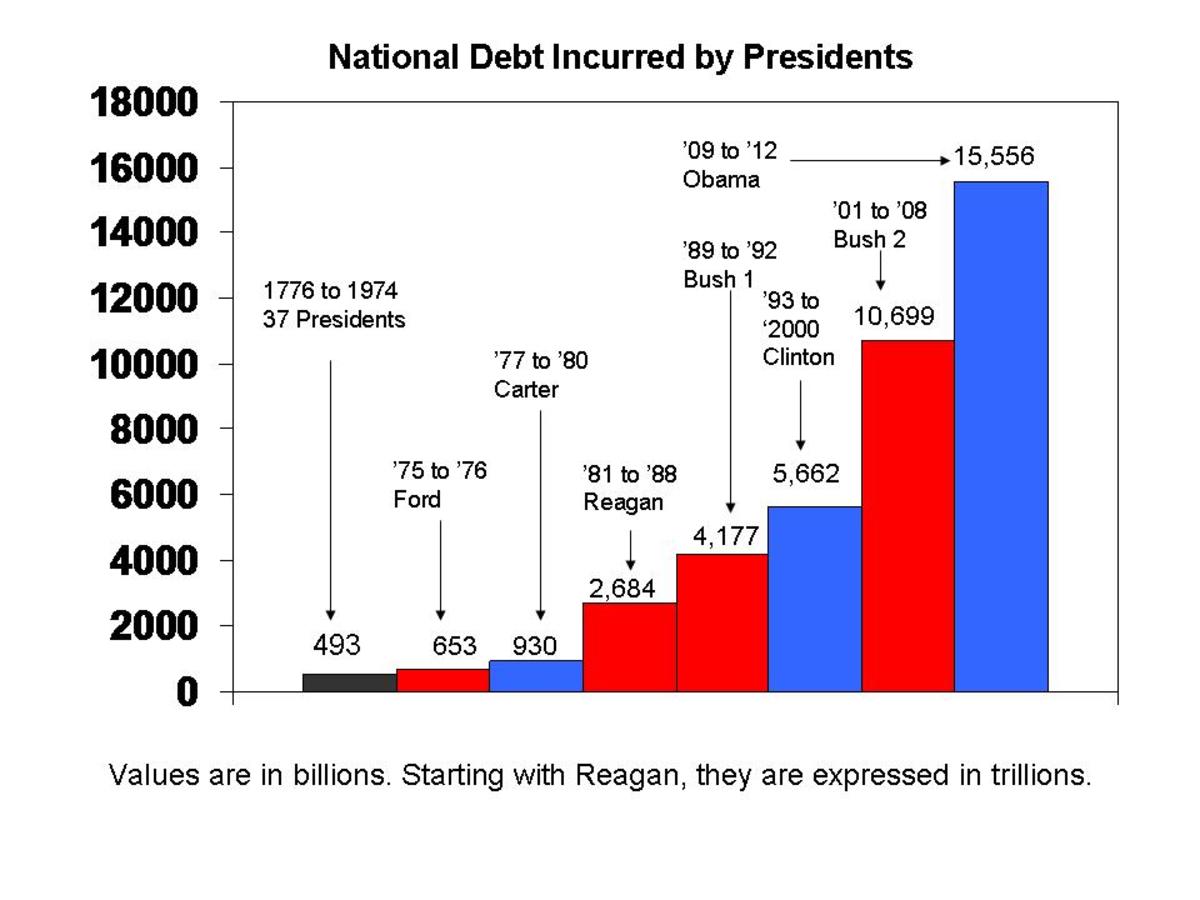Fiat Currency vs. the Gold Standard

Gold or paper?
Gold-backed money is backed by a statutorily-defined amount of gold, held by the issuer of the currency. Generally, it is convertible to gold under certain circumstances. The amount of currency that a government can create and put into use is limited by the amount of gold that the government holds, regardless of the growth or contraction of the economy. The values of different currencies are linked by the underlying value of gold. Proponents of gold-backed currencies believe that this is a more stable system overall.
Fiat currency is simply paper, not backed by anything, including gold, silver, or debt. It is not convertible to anything, and once issued the government is under no further obligations. The amount of fiat currency that a government can create is unlimited. The government can alter the amount of currency in response to growth or contraction in the economy. The values of different fiat currencies are not linked; instead their values are allowed to float in the international currency market. In this way, the various strengths and weaknesses of different economies are taken into consideration when placing a value on their currencies.

Deficits, defined
Whenever a government spends more than it recovers in taxes, it runs a deficit. It does not matter if the government has the gold to back new dollars, or exchanges bonds for currency, or simply issues currency directly, a deficit (like a surplus) is merely the net difference between income and outgo. Deficits are necessary in order to increase the number of dollars in the economy – this is simply accounting. A deficit for the federal government is a surplus for the economy.
The National Debt
The “national debt” is merely a measure of federal bonds outstanding. Most people think of this as an amount that the government “owes,” but that is not really correct. As part of their normal operations, the government issues and redeems securities, which are widely used throughout the world (as the world's dominant reserve currency, dollars (and dollar-denominated securities) are used in about 75% of international transactions). The dollar value of these normal operations dwarfs the “national debt.” Here is the daily Treasury statement for the end of the fiscal year 2013: if you look at Table IIIA, Total Issues, you will see that in the fiscal year we issued $62,163,479,000,000 (that's 62 trillion dollars) worth of govt. securities. Now look to the right, at Total Redemptions (that's bonds redeemed for dollars) - $61,491,537,000,000. The difference in those mind-boggling numbers is that year's net bond position (that year's addition to/subtraction from our “national debt”). (Thanks to Mike Norman for pointing this out on his excellent blog, mikenormaneconomics.blogspot.com)
UPDATE: The website for the above information has changed (both its web address and its layout). Much of the same information can be found here: http://www.treasurydirect.gov/govt/reports/pd/pd_debtposactrpt_1210.pdf
Deficit Spending and the Gold Standard
When the U.S. dollar was convertible to a statutorily-defined amount of gold, the government could not increase the number of dollars unless it had sufficient gold reserves to do so. Let's say, for example, that there are $100 billion gold-convertible dollars in circulation, and the government has just enough gold to back them. Now, if the government wants to spend more than they recover in taxes, they need to either obtain more gold, or borrow back some of those gold-convertible dollars in exchange for bonds – basically, a promise to deliver dollars (plus interest) at a later date. If they do not obtain more gold and instead choose to borrow, the government's immediate liability (in gold) remains unchanged (there is still $100 billion in circulation), plus they have a future obligation to redeem those bonds for gold-convertible dollars. If they are unable to procure more gold and increase the number of dollars that way, they will have to roll over the debt and issue more and more bonds. Increasing the number of gold-convertible dollars therefore costs the government real resources – gold, or some portion of our national output that can be exchanged for gold.
If the government runs a deficit year after year and continues to roll over the debt, their immediate liability for gold will remain at $100 billion, but their ability to borrow more dollars with the promise of later redeeming those bonds for gold-backed dollars becomes more and more unlikely, because their ability to procure the necessary gold is not a sure thing. The more they borrow, the more risk goes up; bond yields rise, and they have to pay increasing interest rates in order to borrow back gold-backed dollars. This is true debt, because the government cannot simply conjure up the resources necessary (gold) to create the dollars they need to redeem the bonds.
This scenario is what most people (even many economists) still think happens when we deficit spend. They are worried about our ability to meet our obligations as the debt gets bigger, and they are convinced that, someday soon, the interest rate on bonds is going to go up, costing us far more in interest than we pay now. But with a fiat currency, all of these worries are unnecessary, as I will explain.
Deficit Spending and Fiat Currency
When a government wants to increase the number of fiat dollars in circulation, they need only issue more fiat dollars. Operationally, there is no need to obtain more gold, or even issue bonds – a government could simply issue fiat currency directly, at no real cost. There may be, however, legal constraints. There are two main legal constraints on dollar creation in the U.S.: we have to keep a positive amount in Treasury's account at the Fed (normally accomplished by issuing bonds to match our deficit spending*), and Congress has to give its OK to issue more bonds (raise the debt ceiling).
*Since the Treasury can mint coins as needed without backing, the idea of minting a few trillion-dollar platinum coins and depositing them into Treasury's account has been considered. This would satisfy the requirement to keep Treasury's account in the black without issuing more bonds (and increasing the national debt), while allowing the government to spend dollars. If nothing else, this should serve to illustrate that fiat dollars are not backed by anything, since the true value of the metal in the coin is minimal. By the same token, bonds are merely promises to deliver paper dollars at a later date - so bonds and dollars are basically equivalent instruments.
To increase the number of fiat dollars, we do not need to procure gold or silver, we only need to satisfy our legal requirements (selling bonds). So again, we start with $100 billion. Now, our immediate liability on that is $100 billion in paper notes - you can no longer present a note to the government and demand anything for it. Now, let's say we "borrow" $10 billion every year to cover our deficit spending. The chances of the government being unable to redeem those bonds for more paper money are zero (barring political stupidity, of course). The effect of that (zero) risk on bond yields will be zero. And now, the ability of the government itself to buy their own bonds is unlimited (again, barring political stupidity), because they don't have to come up with any real resources (like gold) to do so – they need only create the dollars. Because the government is capable of buying their own bonds without limit, their ability to control bond yields is also unaffected by outside demand, because outside demand is simply not necessary. When the statutory requirement to sell bonds is met by the government itself, the dollars spent are effectively direct-issue dollars, because the government is just “paying itself back” when they redeem those bonds. It is simply an internal accounting operation.
Since the creation of fiat currency is not limited by any real resource, the nature of bonds is also different than it was during the gold standard days. Because the government can create as many fiat dollars as they wish with no cost in real resources (like gold), redeeming bonds and their interest is no burden at all. The "debt" is illusory. The $16 trillion in bonds outstanding (our "national debt") can be completely redeemed at no cost to the government.
As U.S. bonds are 100% certain to be redeemable for dollars, they are best thought of as dollar equivalents. In fact, U.S. bonds are the preferred unit of exchange in about 75% of international transactions. Those dollars come from our trade deficits, the extra dollars that pile up in the hands of China, Japan, Saudi Arabia et al. They convert their dollars into U.S. bonds, and those bonds become the main currency of international trade.
Trade Imbalances
When most currencies were convertible into gold, gold was how countries could settle up their trade imbalances. If we ran a $10 billion trade deficit with, say, France, they could convert those dollars into gold. Our theoretical $100 billion in gold-backed dollars would shrink to $90 billion, because we would no longer have the gold necessary to back $100 billion. This was a serious shortcoming of gold-backed currencies.
Today, trade imbalances are dealt with by floating currency values and trading currencies on the foreign exchange market (FOREX). No real resources (like gold) change hands; currency values are determined by supply and demand.
Summary
Tying one's currency to the availability of gold can prevent a government from taking action to help its economy. Fiat currencies better allow governments to adjust to their money supplies based on economic conditions, like growth.








